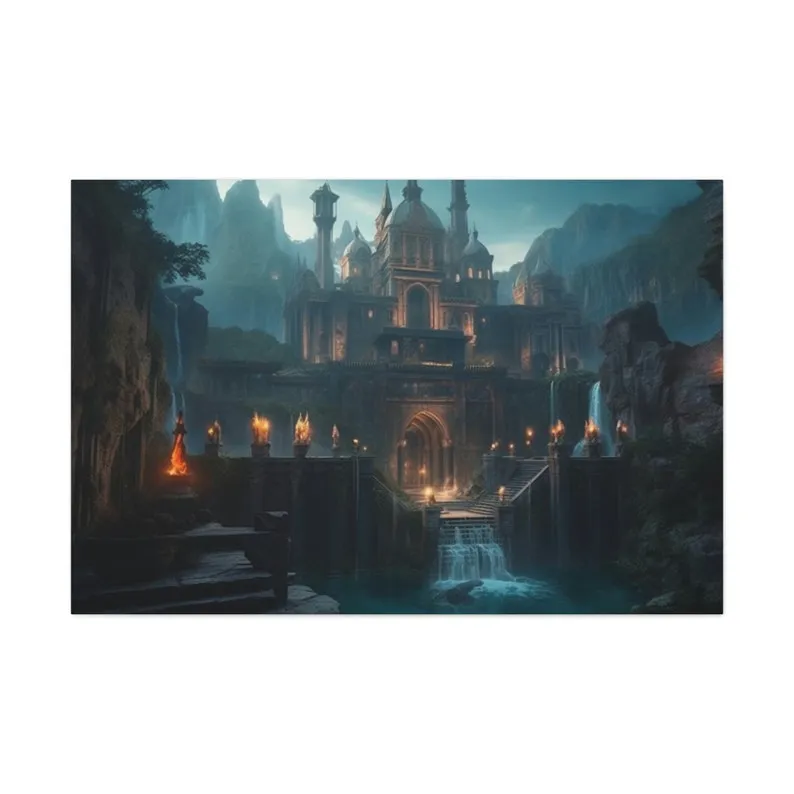Transforming your kitchen into a gothic haven is an exciting design project that allows you to explore a rich and historically evocative aesthetic. Inspired by the grandeur of medieval architecture and the mystery of gothic castles, this style brings a unique blend of drama, elegance, and functionality to your home. The gothic kitchen decor embraces dark, moody color palettes, architectural details, and ornate elements, creating a space that feels both luxurious and timeless. Whether you live in a historic home, a modern apartment, or a suburban house, you can incorporate gothic elements into your kitchen design to achieve a stunning and personalized look. The key lies in understanding the core principles of gothic design and creatively applying them to your space.
Understanding Gothic Kitchen Decor
Gothic kitchen decor is more than just a design trend; it is a statement of elegance and a nod to the past. It’s about creating a space that feels both grand and intimate, with a focus on quality materials, intricate details, and a sense of history. The style is characterized by its use of dark, rich colors, dramatic lighting, and the incorporation of architectural elements reminiscent of gothic cathedrals and castles. This aesthetic allows you to create a kitchen that exudes personality and sophistication, making it a true reflection of your unique style and appreciation for design. The core principle is to balance the dark and dramatic elements with functionality, ensuring the space remains inviting and practical for everyday use.
Key Elements of Gothic Kitchen Design
Several key elements define the gothic kitchen design, each contributing to its distinctive aesthetic. The strategic use of color, materials, and architectural features is essential to creating a truly gothic space. Paying attention to these components will guide you in achieving the desired atmosphere and ensure a cohesive design. It is important to integrate the elements carefully to create the right balance. The design should also be functional and comfortable for everyday use. To fully embrace the gothic style, consider the following elements.
Dark Color Palettes for Gothic Kitchens
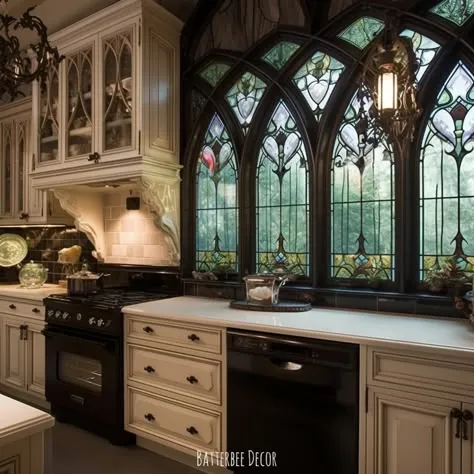
Dark, rich colors are the cornerstone of the gothic kitchen design. Deep hues like charcoal, ebony, and midnight blue create a sense of drama and sophistication, while also providing a perfect backdrop for other design elements. These colors add depth and moodiness to the space, evoking a sense of mystery and elegance. When choosing paint colors, consider the natural light in your kitchen. If your kitchen lacks natural light, balance the dark tones with lighter accents and strategic lighting. Darker shades can make a kitchen feel cozy and inviting, perfect for creating a sense of intimacy. Pairing these colors with metallic accents like gold or copper can further enhance the gothic aesthetic, adding a touch of luxury and contrast.
Incorporating Gothic Architectural Details
Gothic architecture is known for its distinctive elements that contribute to a sense of grandeur and beauty. Arches, vaulted ceilings, and ornate details are central to this design style. Incorporating these features can transform a standard kitchen into a gothic masterpiece. The use of these architectural details can create a unique and visually stunning space. These elements not only add to the aesthetic appeal but also provide opportunities for creative lighting and design choices. The architectural details provide a glimpse into the historic inspiration behind the gothic style.
Arches and Vaulted Ceilings
Arches and vaulted ceilings are iconic features of gothic architecture, lending a sense of height and grandeur to any space. If your kitchen allows, consider adding arched doorways or windows to echo this architectural style. Vaulted ceilings create an airy and open feel, enhancing the overall sense of space. If structural changes are not feasible, you can incorporate arched details through decorative elements such as mirrors or shelving. These features, even when subtly included, bring a touch of gothic charm to the kitchen and can make a significant difference in the overall ambiance, contributing to the dramatic and elegant atmosphere characteristic of gothic design.
Ornate Cabinetry and Hardware
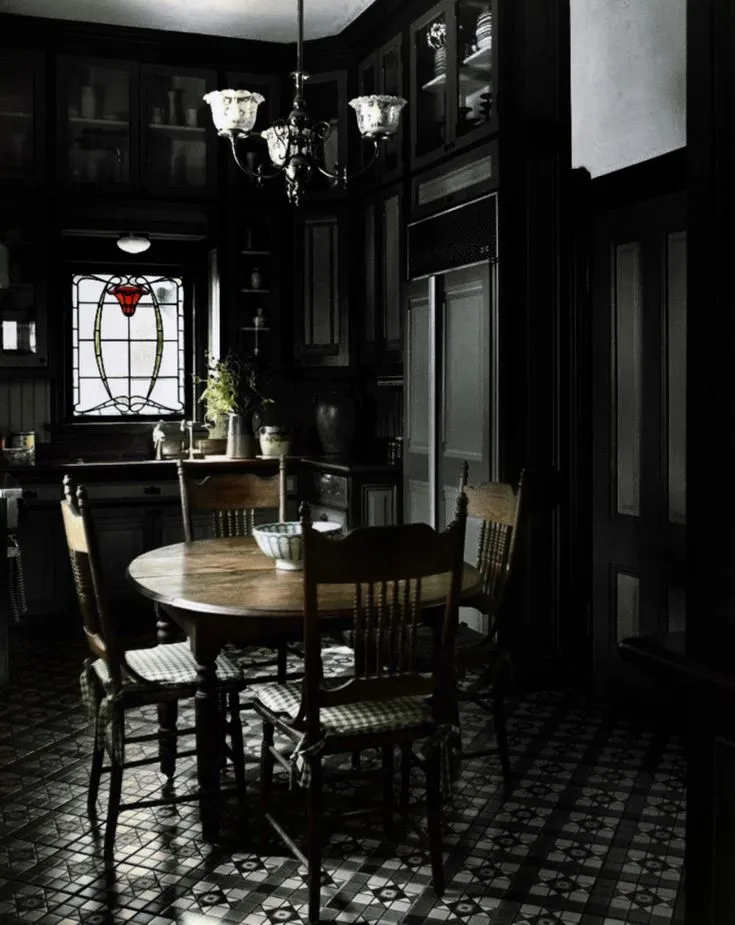
Ornate cabinetry and hardware are essential for achieving the gothic aesthetic. Choose cabinets with intricate carvings, raised panels, and elaborate detailing to capture the essence of the style. Consider using dark-stained wood or painted cabinets in deep, rich colors. The hardware should also complement the overall design. Opt for antique-style handles, knobs, and pulls in materials like wrought iron, bronze, or pewter. These details add a touch of luxury and sophistication to the kitchen, creating a sense of timeless elegance. The choice of cabinetry and hardware will significantly influence the overall ambiance, contributing to the historical feel and rich character of the gothic kitchen.
Choosing Gothic Kitchen Materials
The choice of materials is crucial in creating a gothic kitchen. Opt for materials that reflect the style’s historic influences and provide durability. Using natural, high-quality materials is key to achieving an authentic gothic look. Stone, brick, metal, and wrought iron are all excellent choices that enhance the aesthetic appeal and create a space that feels both elegant and robust.
Stone and Brick in the Kitchen
Stone and brick are fundamental materials in gothic design, adding texture, depth, and a sense of history to the kitchen. Consider incorporating stone or brick elements in your backsplash, flooring, or even an accent wall. These materials bring a sense of rugged elegance and are highly durable. Stone countertops and brick accents create a visual contrast with darker cabinets and enhance the overall gothic feel. This can be a great way to infuse the space with a touch of the medieval while still maintaining the functionality required in a kitchen.
Metal and Wrought Iron Accents
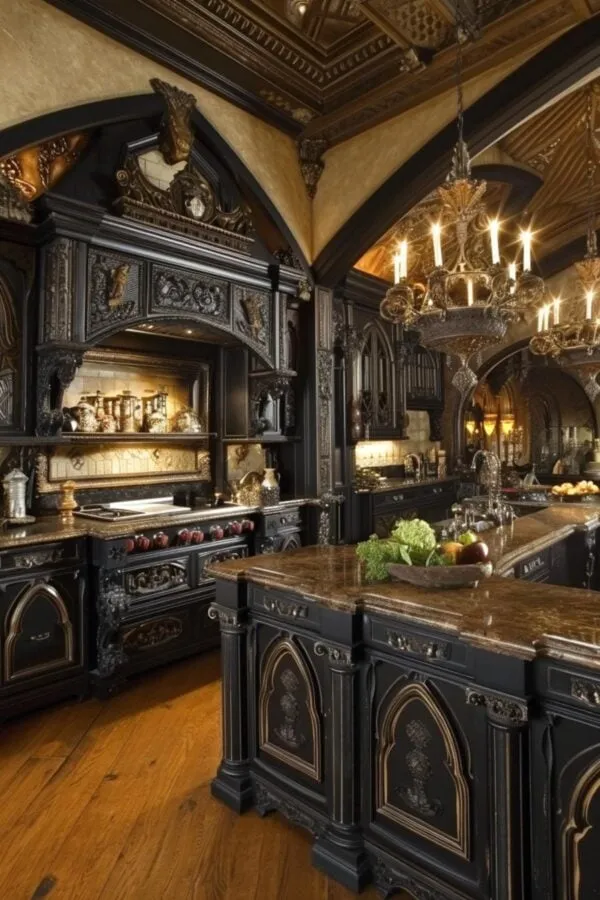
Metal and wrought iron accents add a touch of industrial and gothic appeal. Use wrought iron for cabinet hardware, light fixtures, or even decorative elements such as pot racks and shelving. Metals like bronze, pewter, and copper can be incorporated through faucets, sinks, and decorative bowls. These metallic elements introduce an element of contrast, adding warmth and elegance to the space. The strategic use of metal accents brings a touch of luxury to the kitchen while maintaining its gothic character.
Lighting for a Gothic Kitchen
Lighting is a critical element in gothic kitchen design, setting the mood and highlighting the architectural and decorative features. The right lighting can enhance the drama of the space, while the layering of light creates depth and warmth. Strategic use of lighting not only illuminates the kitchen but also emphasizes the gothic style’s dark, mysterious atmosphere. The correct selection of lighting can significantly enhance the overall ambiance, making the space inviting and functional.
Layering Lighting for Ambiance
Layering different types of lighting is essential for creating a gothic atmosphere. Combine ambient, task, and accent lighting to achieve depth and functionality. Use recessed lighting for overall illumination, pendant lights over the kitchen island or dining area for task lighting, and sconces or accent lights to highlight architectural details. Consider using dimmer switches to adjust the lighting intensity and create different moods throughout the day. Layering the lighting in this manner creates warmth and depth, making the kitchen more inviting and functional, enhancing the gothic style.
Chandeliers and Pendant Lights
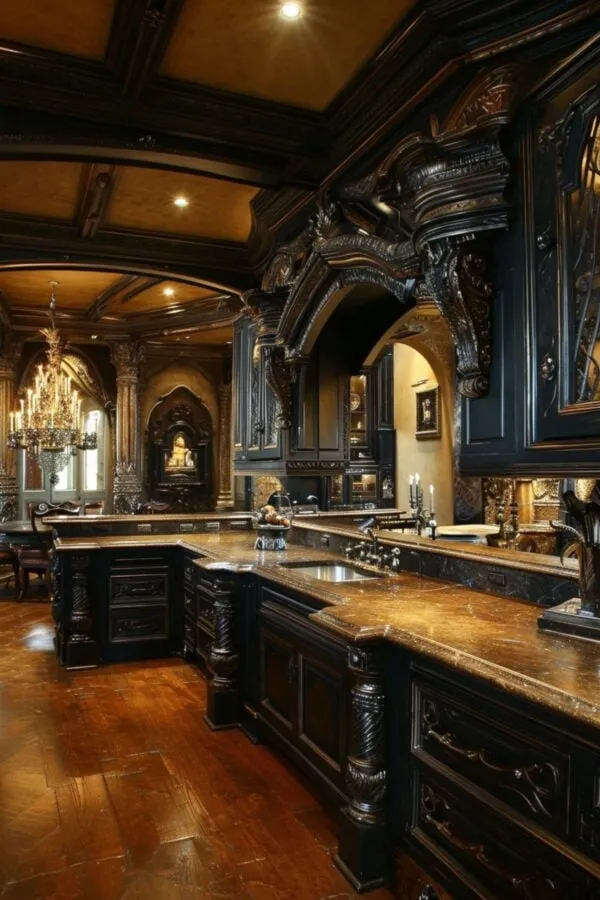
Chandeliers and pendant lights are key elements in gothic lighting design, adding both elegance and drama. Choose chandeliers with intricate designs, crystals, or wrought iron details. These fixtures serve as focal points, enhancing the gothic aesthetic. Install pendant lights over the kitchen island or dining table to provide focused task lighting while contributing to the overall design. The use of chandeliers and pendant lights creates a sense of luxury and sophistication, making a bold statement and enhancing the gothic atmosphere. These choices will add a dramatic flair to your kitchen, reflecting the style’s historical influences.
Decorating a Gothic Kitchen
Decorating a gothic kitchen involves incorporating furniture, accessories, and decorative items that complement the overall design. Choose items that enhance the dramatic and elegant atmosphere. The careful selection of each element helps to create a cohesive and visually stunning space that truly reflects the gothic style. The right decorations are essential for completing the look.
Gothic Kitchen Furniture
Select furniture pieces that enhance the gothic design. A dining table made of dark wood with carved legs and a matching set of high-back chairs will set the tone. For the kitchen island, consider using a dark-stained butcher block or stone countertop to create a focal point. Add a vintage-style sideboard or a display cabinet to showcase decorative items. These furniture pieces should be functional and contribute to the overall aesthetic, creating a space that feels both stylish and practical.
Accessories and Decorative Items
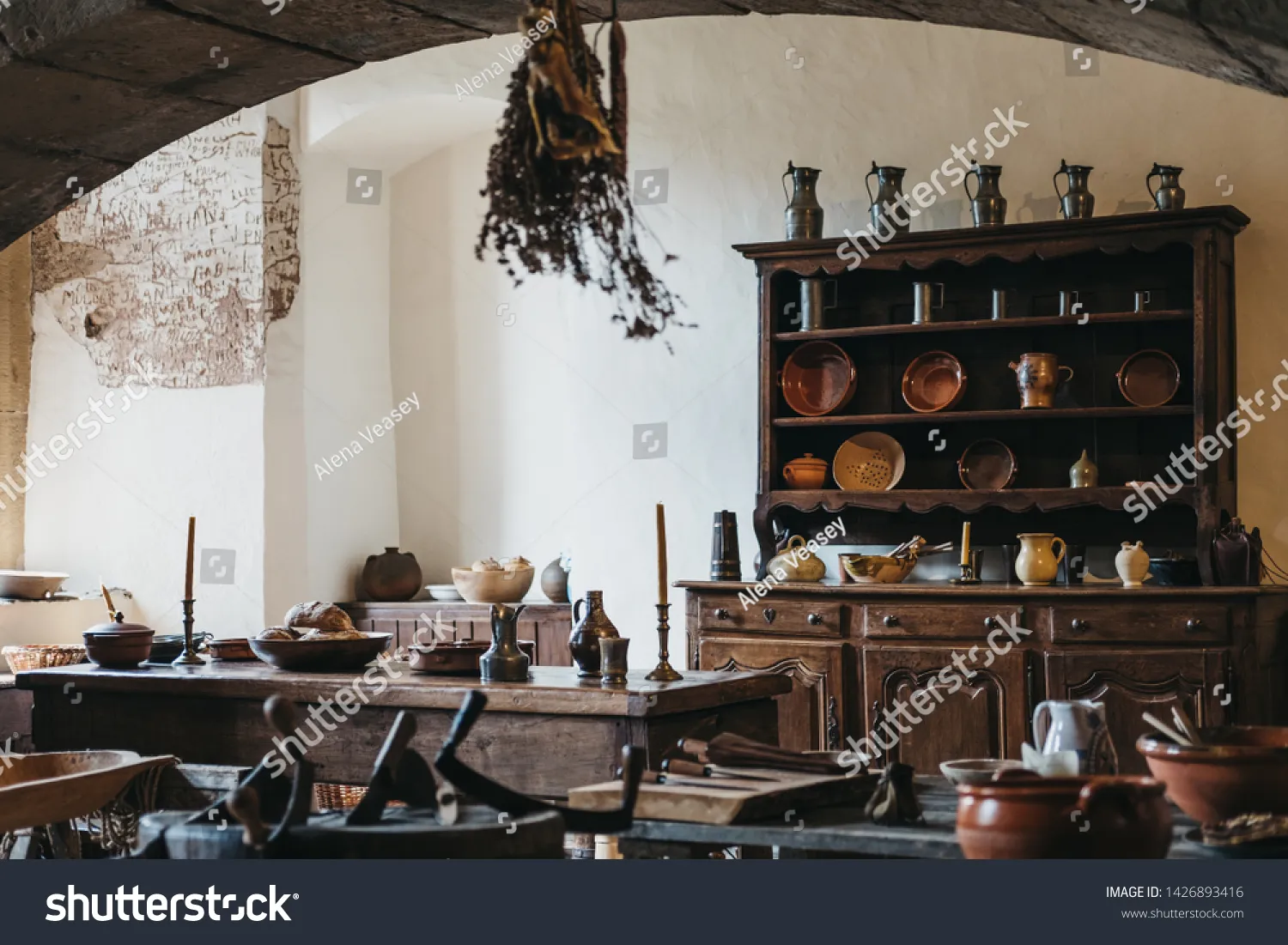
Accessories and decorative items are essential for adding the finishing touches to your gothic kitchen. Display antique candlesticks, wrought iron sconces, and ornate picture frames. Add gothic-inspired artwork, such as portraits or landscapes in dark, dramatic frames. Use vintage-style plates, bowls, and serving dishes to add to the overall theme. Consider using dark-colored textiles such as velvet or damask for window treatments or seat cushions. These accessories will help tie the design together and complete the gothic look. Ensure that your accessories are thoughtfully chosen and positioned to reflect the style’s elegance.
Modernizing the Gothic Kitchen
While embracing the gothic aesthetic, it’s essential to incorporate modern elements to ensure the kitchen remains functional and practical for everyday use. This creates a balance between traditional gothic elements and contemporary functionality. Modern appliances, efficient storage solutions, and smart home technology can be integrated seamlessly into the gothic kitchen design, providing a contemporary feel to the space. The key is to strike a balance between the historical character and modern convenience, ensuring that the kitchen looks stunning while meeting the needs of a modern lifestyle.
Balancing Gothic and Modern Elements
To modernize your gothic kitchen, balance the dark, dramatic elements with contemporary touches. Integrate stainless steel appliances, sleek countertops, and modern lighting fixtures. Use a neutral color palette as a base and add gothic-inspired accents. Incorporate a mix of old and new by combining vintage furniture with modern accessories. This blend of gothic style and modern convenience will create a space that is both functional and stylish. By carefully selecting and integrating these elements, you can create a kitchen that feels both luxurious and practical.
Tips for a Successful Gothic Kitchen Transformation
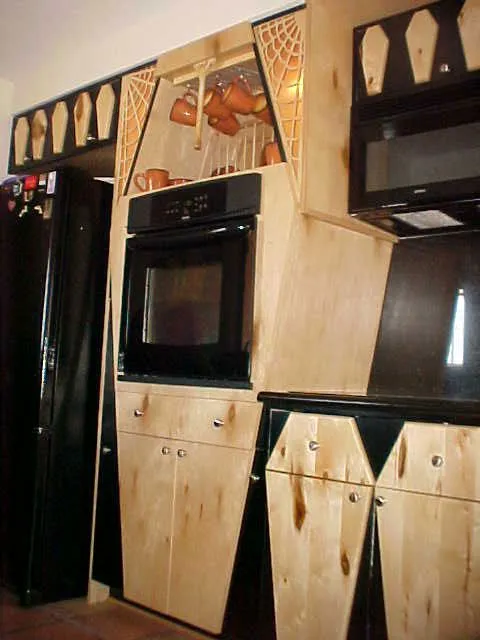
Transforming your kitchen into a gothic space is a rewarding design project that requires thoughtful planning and execution. Success lies in understanding the key elements of the gothic style and incorporating them strategically. When embarking on this type of project, there are a few tips to keep in mind. The right approach ensures that your gothic kitchen transformation is beautiful, functional, and a true reflection of your personal style. Keep the following points in mind to achieve a successful design.
- Research and plan thoroughly
- Start with a color palette
- Focus on key elements
- Incorporate lighting effectively
- Balance old and new
- Don’t be afraid of drama
With careful planning and a passion for gothic design, you can create a truly stunning and unique kitchen that reflects your personality and elevates your home. It’s a space that you will love for years to come.
